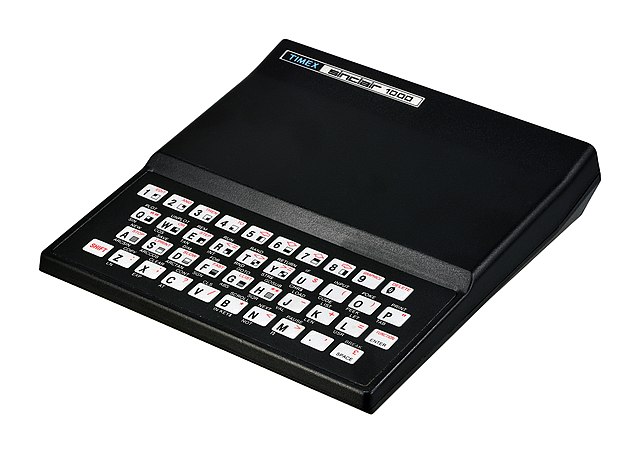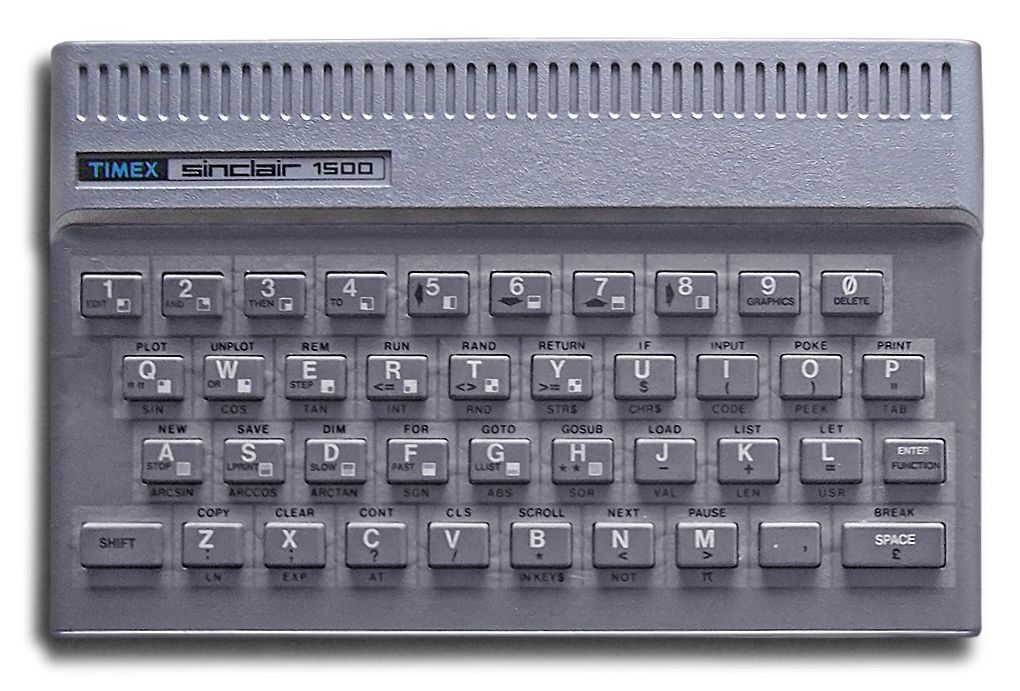Same-ish Name, Same Concept
Before the ZX80 was even released, Sinclair's chief engineer Jim Westwood was tasked with designing a successor called the ZX81.
The main stipulation was it had to have even LESS components to reduce manufacturing costs, and in turn, the price. As difficult as
it sounded, he was able to reduce 18 of the ZX80's chips to a single uncommitted logic array (ULA) chip. Westwood also saw fit to
improve issues the existing hardware had such as low RAM and bugs. He bolstered the ROM to 8 KB so it could have a more
sophisticated BASIC. This new version also had an updated command set, and more calculator functions like trigonometric and
floating-point functions. Rick Dickinson was again tasked with designing the case for the ZX81, which unlike the previous machine,
the team had the technology to injection mould a more resilient case. They were manufactured by American mechanical watch company
Timex Corporation, despite their lack in experience assembling electronics. But they faced a crisis where competitors reduced their
profits to near zero by selling more intricate digital and quartz watches than theirs. Timex director Fred Olsen decided to try
another business sector by taking over production of the ZX80 in late 1980 when Sinclair's manufacturer was low on resources to
appease demand.
Lights, Camera, Action?
In December 1980, Sinclair Radionics owner Clive Sinclair caught wind of a plan by British broadcasting company... British
Broadcasting Company (BBC) to encourage computing and programming with a new TV show. They did this by creating their
manufacturer to produce a home computer that tied in with the show. Sinclair responded with an intent to release a cheaper, more
advanced successor to the ZX80 early next year, hoping they would take his machine for use on the show. He added that the 40,000
ZX80 users, in addition to tens of thousands of totally new users, could eventually purchase the ZX81. However, as rival Acorn
Computers announced the Acorn Proton, BBC ended up accepting their design instead. This led to the creation of the mega-hit BBC
Micro, released in January 1982. Following being rejected by BBC, Sinclair's machines weren't included in the government's list of
computers schools could purchase for half the price. But he brushed it off by launching his own deal. Schools could purchase a
ZX81, in addition to a 16 KB RAM pack and ZX Printer, all for £90. Although 85% of schools bought the BBC Micro, 2,300 did end up
purchasing the ZX81.
A Stunted Start
The ZX81 came out 5 March 1981 as a kit, which the customer can assemble themselves, and pre-assembled if they wanted to spend a
fraction more. But for six months, just as Sinclair did manufacturing their ZX80s, Timex struggled to produce enough ZX81s to
meet demand. It wasn't until September when the reasonable one-month delivery time was achieved. And although the computer had
some reliability issues, such as power supplies failing, it was a success. By March 1982, 250,000 units were sold.

The Magic Voyage
When the ZX81 moved across the pond to the United States, it sold for $99.95, the cheapest of any home computer in the region.
This prompted Commodore to reduce the VIC-20's price, and eventually start a program where any other computer that's brought in
could be traded in for $100 of credit towards a Commodore 64. This led to people buying TS 1000s only to trade them in for the
higher-speced machine. In short, by early 1983, about 600,000 units sold.

Also in 1983, Timex Sinclair came out with the 1500. It reused the silver case design of the ill-fated 2000 unit when the
2068 ended up coming out instead.
Although the rubber chiclet keyboard wasn't as good as computers like the Commodore 64 and Atari 8-bit machines, it was definitely
an improvement over the membrane keyboards of the 1500's predecessors. It came out with 16 KB of internal RAM with RAM packs
available to double it to 32 KB. Unlike other machines, some POKE commands were required to have the computer recognize extra
memory space, if installed. All in all, the Americanised Spectrum known as the 2068 was in color, and was already a better option
following the success of the 1000. There was no actual reason to buy a 1500.





